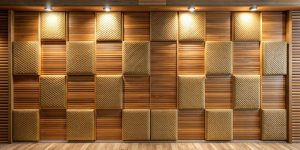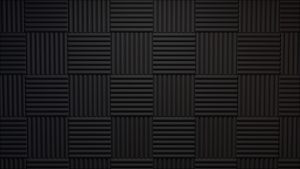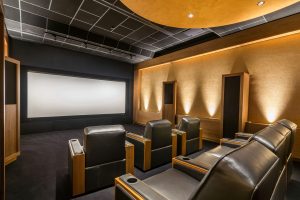Why Is “Your Brain On Sound”? – Part 2
In Why Is “Your Brain On Sound” – Part 1, we looked at the evolutionary reasons for why and how our brains process sound as a critical element of our survival mechanism. In Part 2, we’ll look at what this has to do with acoustical products.
Anything that changes the timing (phase) relationships of a sound has a damaging effect on the accuracy of our perception of that sound (and whether it signifies a potential threat to us). Because a room’s flat-surface wall and ceiling reflections change the timing relationships of sound from our monitor speakers, stereos, home theater systems, musical instruments or voices, we hear inaccurate sound images (the directional “width” and “depth” of sounds), because sound images are built on timing cues. We use acoustical products, called “treatments”, to reduce the damaging effects of flat-surface reflections on sound, and this improves our hearing abilities.
However, some room treatments themselves can be damaging to the timing relationships of sound – too much absorption harms our ability to correctly process room ambience, and phase-shift-based treatments, called “quadratic-residue diffusors”, damage timing relationships within diffused reflections. At Acoustic Geometry, we offer products that have a minimal effect on sound timing, called “Curve Diffusors”, which are phase-coherent (time-accurate) designs. These cause minimal damage to sound images while evenly diffusing flat-surface reflections that cause destructive interferences. Curve Diffusors also allow us to use much less absorption to effectively treat a room, which helps retain the room’s beneficial ambience.
Our brain uses ambience cues to subconsciously monitor the safety of our surroundings, and when the room ambience doesn’t match our brain’s expectations because the room has too many absorbers, we become increasingly uncomfortable, which can lead to “listening fatigue”.
One of the reasons the over-use of absorbers is common in sound rooms, aside from their presumed ease-of-use, is the push to achieve “flat frequency response” at the listening position – which in turn has been hastened by the proliferation of inexpensive frequency-response measurement tools. There are two reasons this is not useful: true “flat frequency response” isn’t possible, as it defies the laws of physics (and it’ll show your room as a depressingly-jagged frequency plot); and more importantly, our brain is much more sensitive to acoustic timing accuracy than frequency accuracy. Our hearing system is notoriously “un-flat”, and frequency-based sound cues are not nearly as important as timing-based cues – timing accuracy is a survival-tool essential. Again, sound images are built on timing cues.
“Absorber overload” has increased dramatically in recording studios and home media rooms, with unhappy consequences, not the least of which is a decrease in our ability to discern pitch. Over-absorption interferes with our pitch perception, and may be part of the reason for increasing pitch-correction usage in recordings (excepting obvious robotic effects and talent shortcomings). There are thousands of over-damped, absorber-stuffed isolation booths in recording and practice studios, and even with excellent headphone mixes, singers and instrumentalists have trouble with correct intonation in these dead-sounding rooms.
Acoustic Geometry strongly asserts that retaining the acoustical timing relationships and ambience integrity of sound is critical to accurate hearing, and our Curve Diffusors do just that. We hear better in acoustic environments which diffuse sound without damaging the all-important phase content, and use minimal amounts of absorption. Our brain is “on sound” to help us survive – and these days, to help us enjoy our entertainment-of-choice in properly-treated, phase-coherent acoustic environments.
Watch our latest video, “Your Brain On sound”, for the three-and-a-half minute, Paleolithic-diorama-featuring, twig-snapping visual version of this blog.
click anywhere on video to play/pause

















One comment on “Why Is “Your Brain On Sound”? – Part 2”
Pingback:
Why Is “Your Brain On Sound”? – Part 1 | Acoustic Geometry